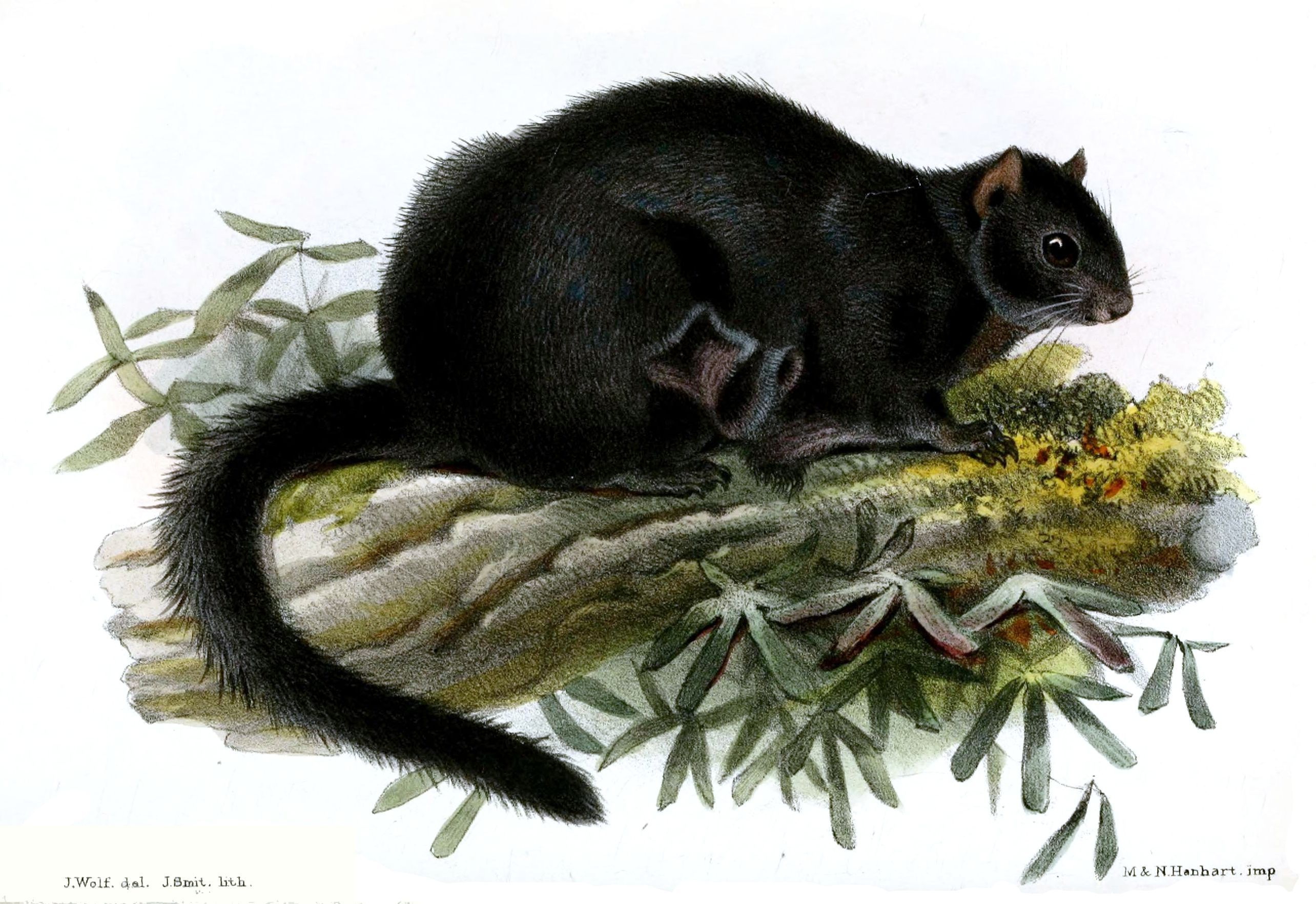| Taxon ID: 1,391 Total records: 39,143 | ||||||||||||||
Aeromys tephromelas
Country
| Country | Brunei Darussalam |
|---|---|
| Continent Ocean | Asia |
Classification
| Kingdom | Animalia (COL) |
|---|---|
| Phylum | Chordata (COL) |
| Class | Mammalia (COL) |
| Order | Rodentia (COL) |
| Family | Sciuridae (COL) |
Taxonomy
| Genus | Aeromys | Reference | |
|---|---|---|---|
| SubGenus | Vernacular Name | ||
| Species | tephromelas | IUCN Threat Status-Year | Data Deficient, 2016 |
| SubSpecies | Nat'l Threat Status-Year | Not Evaluated, 2000 | |
| Infraspecies | Reason for Change | ||
| Infraspecies Rank | CITES | ||
| Taxonomic Group | Terrestrial Mammals | Native Status | Native |
| Scientific Name Author | (Günther, 1858) | Country Distribution | Brunei Darussalam; |
| Citation | Lee, B. 2016. Aeromys tephromelas. The IUCN Red List of Threatened Species 2016: e.T556A22271336. https://dx.doi.org/10.2305/IUCN.UK.2016-1.RLTS.T556A22271336.en. Downloaded on 23 June 2021. | Description | JUSTIFICATION Listed as Data Deficient since, although it has been recorded over a very wide area, very little is known about its status and habitat requirements. According to Medway (1983) it is restricted to lowlands and foothills in Peninsular Malaysia. If this pattern is found in the rest of its range it may merit categorisation as at least Near Threatened. RANGE DESCRIPTION This species is known from Peninsular Malaysia, Penang island, Sumatra and Borneo (Medway 1983). The "typical form" of this species occurs in southernmost provinces of Thailand. Reports from northern Thailand in Lekagul and MacNeely (1977) have not been confirmed, nor have those in Tizard et al. (1997) from northern Lao PDR. However, flying squirrels in these areas remain very poorly known so it is unclear whether these dark animals are melanistic Petaurista sp. or Aeromys tephromelas. DESCRIPTION This is possibly a naturally uncommon species. HABITAT AND ECOLOGY This nocturnal flying squirrel inhabits primary and secondary forests, foothills of the ranges in Borneo and Malaysia. It is also found in gardens where it uses tree hollows. It is relatively adaptable. This species eats fruits, nuts, and other vegetable matter (Lekagul and McNeely 1988). THREATS There are no major threats to this species, as it is adaptable and is likely to persist unless forest is lost completely. CONSERVATION ACTIONS It likely occurs in protected areas across its range. However, further studies are needed into the distribution, abundance, natural history and threats to this species. |
| Source |
Record Level
| Date Last Modified | 2021-06-24 21:34:08 |
|---|---|
| Institution Code | ACBBISS-BN |
| Collection Code | 1391 |
| Catalog Number | ACBBISS-BN-1391 |
| Record URL | https://www.catalogueoflife.org/data/taxon/64ZXL; https://www.iucnredlist.org/species/556/22271336 |
Growth Parameters
| Temperature | 0 | Observed Weight | 0 |
|---|---|---|---|
| Sex | Previous Catalog Number | ||
| Life Stage | Relationship Type | ||
| Preparation Type | Related Catalog Item | ||
| Individual Count | 0 | GML Features | |
| Observerd Individual Count | 0 | Notes |
Collecting Event
| Basis Of Record | Taxon | Day Collected | 0 |
|---|---|---|---|
| Collector Number | Start Day Collected | 0 | |
| Field Number | 0 | End Day Collected | 0 |
| Collector | Julian Day | 0 | |
| Year Collected | 2021 | Start Julian Day | 0 |
| Start Year Collected | 0 | End Julian Day | 0 |
| End Year Collected | 0 | Time Of Day | 0 |
| Month Collected | 0 | Start Time Of Day | 0 |
| Start Month Collected | 0 | End Time Of Day | 0 |
| End Month Collected | 0 | Time Zone |
Images
|
Additional Info
Synonyms To Manage Synonyms for Aeromys tephromelas, click this link: Synonyms. |
|
Common Names To Manage Common Names for Aeromys tephromelas, click this link: Common Names. |
|
Localities To Manage Localities for Aeromys tephromelas, click this link: Localities. |
Species Record Updated By:
Carlos Aurelio Callangan
|

